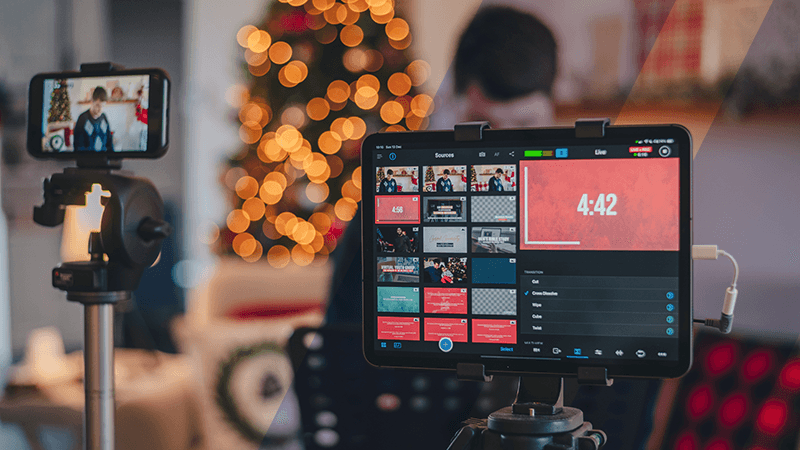Are you looking for a graphic designer for your ecommerce business? It's an important decision to make, and the right designer can make a huge difference in the success of your online store. But how do you know who is the right designer for you? Let's break it down and look at what qualities and skills to look out for when selecting a graphic designer for your ecommerce business.
What qualifications should an Ecommerce graphic designer have?
An ecommerce graphic designer should possess the following qualifications:
- Knowledge of design software such as Adobe Creative Suite (Photoshop, Illustrator, InDesign, etc.)
- Proficiency in web design and coding languages, such as HTML, CSS, and JavaScript
- Experience with user interface (UI) and user experience (UX) design principles
- Understanding of the principles of typography, branding, and color theory
- Creative problem-solving skills and the ability to come up with innovative design solutions
- Excellent communication skills with the ability to translate client’s ideas into visuals
- Knowledge of printing processes and design development
- Ability to work collaboratively as part of a team
- A strong attention to detail and accuracy
- Ability to multitask and meet tight deadlines
- Strong understanding of design principles and ability to create visually appealing graphics
- Good understanding of the ecommerce industry and web design trends and best practices
- Ability to create designs optimized for digital marketing and conversion optimization
What are the key skills that every Ecommerce graphic designer should possess?
An eCommerce graphic designer is responsible for creating visual content that effectively promotes and sells products or services online. In order to be successful in this role, it is important for a designer to possess a combination of both technical and creative skills.
1. Creative thinking: The ability to come up with original and innovative ideas that effectively communicate the brand and message.
2. Adobe software knowledge: Proficiency in using industry-standard graphic design software such as Photoshop, Illustrator, and InDesign.
3. Written language proficiency: The ability to write clear, concise, and compelling copy to accompany visual content.
4. Interactive media expertise: Knowledge of how to create interactive media, such as animations, interactive graphics, different types of marketing videos, to enhance the user experience.
5. Branding: Understanding of how to develop and maintain a consistent brand identity across all visual materials.
6. Presentation delivery: The ability to present designs and ideas effectively to clients and stakeholders.
7. Digital marketing: Knowledge of how to use design to support digital marketing efforts, such as email campaigns and social media ads.
8. Graphic design: A strong foundation in the principles and techniques of graphic design, including layout, composition, and typography.
In addition to these key skills, it is also important for an eCommerce graphic designer to have analytical skills, artistic ability, communication skills, knowledge of digital imaging, web design, and Sketch.
They should also have a good grasp of typography, color theory, and content management systems. All these skills are important for a designer to be able to create visually appealing and effective designs that drive engagement and conversions for an eCommerce website.
What portfolio samples should an Ecommerce graphic designer provide?
An ecommerce graphic designer should provide a portfolio that includes examples of their work in the areas relevant to ecommerce, such as product photography, website design, email marketing campaigns, social media graphics, and advertising materials.
The portfolio should demonstrate their ability to create visually appealing and effective designs that are optimized for online sales and marketing.
Additionally, it should showcase their knowledge of ecommerce design best practices, such as responsive design and user experience design. It would be beneficial if the portfolio also includes examples of work with a variety of ecommerce platforms and technologies.
How much experience is typically required in order to be a successful Ecommerce graphic designer?
Employers in the graphic design field are often looking for candidates with a significant amount of experience in the industry. A prospective employee's experience level often dictates the type of role they can be considered for.
For entry-level or mid-level roles, employers usually expect at least three years of relevant experience. More advanced managerial or directorial roles, however, tend to require a minimum of six years of experience in order to be considered.
The level of experience required for a given role can also vary depending on the employer's individual preferences, as well as the current job market and the skill level of available candidates.
Furthermore, employers tend to look favorably on candidates who have worked in the same field for a number of years and have an existing portfolio of completed projects. This demonstrates consistent effort and commitment to the industry, as well as a broad knowledge of the field.
How will the Ecommerce graphic designer ensure that the design solutions meet the project goals?
Designers must take a comprehensive approach to the project to ensure that the design solutions meet the project goals. Here are the steps or best practices for ecommerce graphic design:
1. Understand the client’s needs: The designer must first understand the client's overall goals, audience, budget, and timeline.
2. Research the industry: Next, the designer must research the industry, competitors, and target audience to ensure they understand the context of the project.
3. Develop a creative concept: Once the research is complete, the designer should develop a creative concept that is tailored to the client’s needs and goals.
4. Design: With the concept in mind, the designer should build out the design, using color, typography, images, and other visual elements to create a unique look and feel.
5. Test: The designer should test the design to ensure that it meets the client’s goals and works across different devices and browsers.
6. Iterate: If necessary, the designer should iterate on the design to refine it until it meets the client’s expectations.
By following these steps and best practices, ecommerce graphic designers can ensure that the design solutions they create will meet the project goals.
Enhance Your Graphic Design Strategy with Outsourced Customer Care
Elevate your graphic design services by focusing on the heart of what makes them successful - understanding your customers. Outsourcing your customer care is a strategic move that can significantly boost the effectiveness of your graphic design offerings.
At ManilaPros, we we specialize in providing five-star customer care for retailers that can deeply inform and enhance your graphic design strategy. We're a full-service company that can provide you with customer support Pros that are screened, vetted, trained, and certified for your brand. We'll also provide you with a dedicated account manager who can oversee your retail CS operations for you.
Book a call with us today to learn more.





